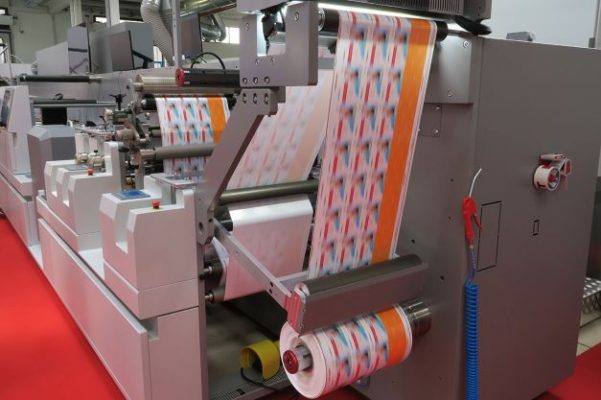The annual “State of the Flexible Packaging Industry Report,” recently released by the Flexible Packaging Association (FPA), provides industry converters, suppliers, investors, and analysts with insight into the performance of the U.S. flexible packaging industry over the past year. This definitive source of data and information also examines several other aspects of the industry, including:
- Performance: growth, revenue/volume expectations, profitability, and capital spending
- Materials and processes: printing and expected material usage
- End uses: end-use forecast and U.S. Census Bureau retail segments data
- Structure and consolidation: merger and acquisition activity
- Imports and exports: trade outlook
- Industry vision, challenges, and critical issues
The report covers the entire flexible packaging industry, including the segment of the industry that adds significant value to flexible materials, usually by performing multiple processes. This segment of the industry is estimated to be $29.5 billion in 2021 and does not include retail shopping bags, consumer storage bags, or trash bags.
Economic Analysis in the U.S.
New for this year’s report is an economic analysis of the flexible packaging industry in the U.S. In the spring of 2022, FPA commissioned a study by the economic analysis group, Inforum, to look at the economic contribution of the flexible packaging industry. The study focused on the industry impact in 2020 when the COVID-19 pandemic was in full force.
The study considered the economic impacts the industry contributes to the U.S. economy, including direct and indirect impacts.
Inforum also leveraged its modeling software to incorporate macroeconomic indicators such as gross domestic prices, personal consumption prices, and unemployment rates to calculate the growth impact and industry output of the flexible packaging industry.
U.S. Flexible Packaging Industry Performance
The total U.S. flexible packaging industry is estimated to be $39 billion in annual sales for 2021, an increase of 12.1% from $34.8 billion in 2020. The industry volume is estimated to be 27 billion pounds in shipments for 2021.
Flexible packaging represents 20% of the total $184.7 billion of the U.S. packaging industry and is the second largest packaging segment behind corrugated paper. The value of shipments for the U.S. flexible packaging industry is expected to increase to $40.9 billion in 2022, based on a projected growth rate of 4.9%. This number may increase, as inflationary pressures continue in 2022 and could drive up overall revenue and costs.
Industry Structure
The flexible packaging industry comprises approximately 460 converters. The “Top 5” account for 46% of revenue, and the “Top 10” account for 62% of revenue. The “Top 25” converters comprise 75% of total revenue.
Industry consolidation continued over the past decade, as larger companies added capabilities and expanded through mergers and acquisitions. The year 2021 alone saw a record number of merger and acquisition activities, with 62 recorded transactions. This resulted in large companies—with sales greater than $500 million—now encompassing approximately 65% of all industry sales, up sharply from the 49% overall share they held in 2007.
Materials and Processes
Flexible packaging companies use several materials and processes to produce flexible packaging. Films and resins accounted for the largest spend for converters, making up over two-thirds of material purchases. Within films, polyethylene (PE) remains the dominant material, with all converters responding to the survey saying they use PE. Polypropylene and polyester are the next most frequently used categories.
Bag/pouch making, printing, laminating, and stand-up pouch production are the most common processes implemented by converters, with over 75% of respondents saying they perform those processes.
Flexo printing remains the dominant print technology, accounting for 72% of shipments. Converters continue to add digital printing capabilities; in 2021, the share of converters who said they had digital printing capability was around 19%. However, sales figures for converted products do not reflect a similar growth—digitally printed substrates accounted for less than 1% of shipments.
Issues and Vision
Converters and suppliers saw “Labor/Talent” as the industry’s biggest issue for 2022, according to the report. The issue appears to be problematic for many industries, not just flexible packaging. This year, the U.S. unemployment rate has been hovering around 3.5%, causing many companies to increase wages to attract and retain workers with the needed skill sets.
Converters and suppliers again agreed on the second largest issue facing the industry, “Raw Materials,” which also reflects what many U.S. industries face in general, particularly with inflation playing a larger role than it has in decades. Inflationary pressures are expected to be a concern throughout 2022.
Data Sources
FPA gathers the information contained in the report through several reliable industry sources, including the FPA members’ State of the U.S. Flexible Packaging Industry Survey; the FPA nonmembers’ Industry-Wide Converter Survey; the Annual Survey of Manufactures, published by the U.S. Census Bureau; the U.S. Department of Labor; the U.S. Department of Commerce; industry analysts; and investment banking reports.
Data collected from these sources provide a more complete picture of the U.S. flexible packaging industry and help to cross-check information regarding industry size, structure, market segments, and key packaging products. The report is available to all members and is available for purchase by nonmembers.
Dani Diehlmann is FPA vice president, communications.
